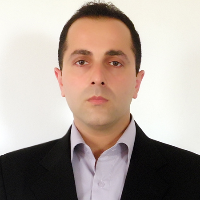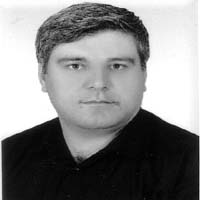Determining the distance between the transmitter and receiver in a layered sound with acoustic reverse method in the laboratory.
Author(s):
Article Type:
Research/Original Article (دارای رتبه معتبر)
Abstract:
In order to estimate the distance between the transmitter and receiver placement of transmitting audio (at a frequency of 50 kHz) in a stratified environment (three layers of different densities) used in laboratory conditions. Experiments in a glass tank with a length of 300 cm and a width of 50 cm and depth of 100 cm is conducted. is water, we recorded the noises contained in data Batrvs removed using a filter. Receivers, sound passing through each layer due to the speed of sound changes due to the density difference between layers with a time lag receives. By comparing this Akhtlafzmany there when passing through an environment resulting from changes in the speed of sound layering, and a homogeneous environment (tank full of water) and changes in peak-to-peak signal, received signal power and strength to help in moments of sound transmission techniques. compressed pulse we calculate the distance between the sensors.
Keywords:
Language:
Persian
Published:
Marine Technology, Volume:5 Issue: 3, 2018
Pages:
75 to 86
https://www.magiran.com/p1928838
سامانه نویسندگان
اطلاعات نویسنده(گان) توسط ایشان ثبت و تکمیل شدهاست. برای مشاهده مشخصات و فهرست همه مطالب، صفحه رزومه را ببینید.
مقالات دیگری از این نویسنده (گان)
-
Improving the quality of digital X-ray and gamma radiographic images of the weld line in welding
Majid Aqababaei, Hossein Ali Zabihy *
Journal of Marine Electrical Engineering, -
Motor Activity Brain Signals Recognition in Seaman by using Blind Source Separation Algorithm
Majid Aqababaei *, Nastaran Saleh, Arya Pesian Zadeh
Journal of Marine Electrical Engineering, -
The study of squat phenomenon in narrow shipping channels by means of physical designs
*, Abbas Fazelinia
Journal of Marine Science and Technology, -
Coastlines detection with satellite images processing technique in part of the Gulf of Mexico
*, Mahdi Akbarzade Shirsavar, Saeed Farhadipoor, Hasan Mohammadi
Hydrophysics Journal,




